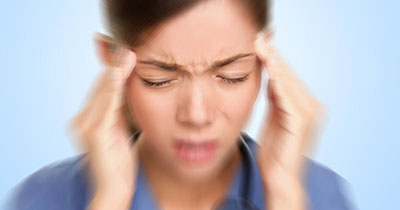
Patients complaining of headaches dates before 7,000 BC, and the earliest documented treatment was a medical procedure called Trepanation. The oldest trepanned skull was found at a Neolithic burial site in France, and is more than 7,000 years old. The procedure today is known as craniotomy and is still practiced for certain neurological conditions. This is probably the earliest form of neurosurgery and it was practiced by the Ancient Egyptians, Chinese, Indians, Romans, Greeks and the early Mesoamerican civilizations. The procedure is still performed today, for both medical and non-medical reasons. The procedure entailed using a 20 cm long stone chisel to enter the skull to relieve the pressure. The Father of Medicine, Hippocrates, wrote specific instructions on how to perform this procedure for headache pain. Over the centuries, medicine evolved and the pathophysiology/etiology of headaches was better elucidated. Over time, this procedure fell out of favor for treating routine headaches in the medical community, and lead to innovative treatments to relieve headache pain.
Why is this important?
Migraine headaches are indicators of the following:
- A patient population at high risk for decades of medical needs
- A potentially chronic disease associated with high disability
- 4th leading cause if disability in women worldwide
- 14 percent transform from acute or intermittent to chronic annually
Who sets the standard of what symptoms constitutes the compendium of migraine headaches?
Migraine Recognition by ICHD = International Classification of Headache Disorders
According to the ICHD, there are 2 main categories of Migraine headaches: Migraines without Aura and Migraines with Aura.
What is an Aura?
Medical definition of aura-
Aura: A sensation perceived by a patient that precedes a condition affecting the brain. An aura often occurs before a migraine or seizure. It may consist of flashing lights, a gleam of light, blurred vision, an odor, the feeling of a breeze, numbness, weakness, or difficulty in speaking. (Source: medicinenet.com/script/main/art.asp?articlekey=2395)
Let’s first define Migraine with Aura: According to ICHD the following requirements must be present:
Migraine with Aura – at least 2 attacks with:
1. At least 1 fully reversible symptom without motor findings (this excludes seizure disorders):
- Visual + and/or
- Sensory + and/or
- Dysphasic speech
2. At least 2 of the following:
- At least 1 aura symptom develops gradually over > 5 min or different symptoms occur in
- succession over 5 min
- Each symptom lasts > 5 min and < 50 min
- No organic disease
The ICHD defines Migraine Headache without Aura as the following:
At least 5 attacks with a minimum of at least 2 of the following:
- Unilateral
- Pulsating
- Moderate to severe pain
- Aggravated by or avoidance of routine physical activity
And at least 1 of the following:
- Nausea and/or vomiting
- Photo and phonophobia
These criteria are relatively straight forward and elicited as part of the medical history.
Many patients want to know or request radiology exams to determine if they have migraine headaches or something more onerous. If indicated, what diagnostic test would be appropriate?
CT or MRI?
- MRI yields greater detail, but more false positives
- MRI for posterior fossa disease
- MRI + MRA for suspected aneurysm/other vascular lesions
- CT without contrast to rule out subarachnoid hemorrhage
Individual’s experiencing debilitating headaches for the first time should see their primary care physician for a full medical evaluation and, if indicated, diagnostic testing. If testing excludes any pathological brain findings, then definitive treatment can be implemented.
What are the treatment options for migraine headaches?
There are multiple options for the treatment of migraines:
- Osteopathetic or cervical spinal manual manipulation therapy
- Acupuncture
- Triptan (Sumatripan etc)
- Triptan + NSAIDs
- Acetaminophen/ASA/caffeine
- NSAIDs + caffeine
- Metoclopramide + Triptan or NSAID or ASA
- Tailor to coincident symptoms
The information provided is for general interest only and should not be misconstrued as a diagnosis, prognosis or treatment recommendation. This information does not in any way constitute the practice of medicine, or any other health care profession. Readers are directed to consult their health care provider regarding their specific health situation. Marque Medical is not liable for any action taken by a reader based upon this information.

